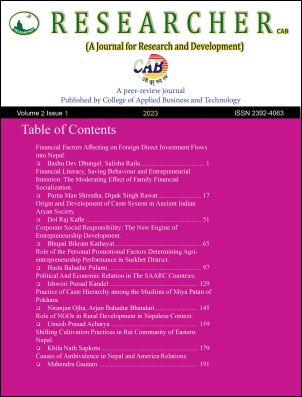Shifting Cultivation Practices in Rai Community of Eastern Nepal
DOI:
https://doi.org/10.3126/rcab.v2i1.57650Keywords:
Shifting cultivation, fallow, Rai community, Khoriya land, livelihood, socio-economic importance, transitionAbstract
Shifting cultivation is a form of land use pattern with a rotation of cultivation followed in the same unit of land. Thousands of indigenous people, with majority households in subsistence living, are dependent on shifting cultivation practices due to the lack of alternate source of income generation. Shifting cultivation in Nepal, locally called as Khoriya or Bhasme, is a land use practice in which indigenous communities clear and cultivate secondary forests in plots of different sizes, leave these plots to regenerate naturally through fallows for medium to long duration. This practice is in transition these days due to rising population of shifting cultivators, and demand for more food. The study demonstrates the relationship among land use practices, people’s livelihood and health issues of Rai community who are involved in shifting cultivation practices in Balakhu Village of Okhaldhunga.




